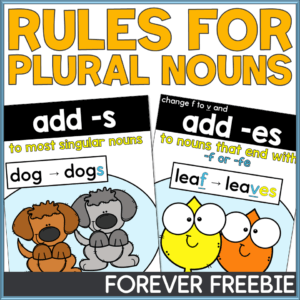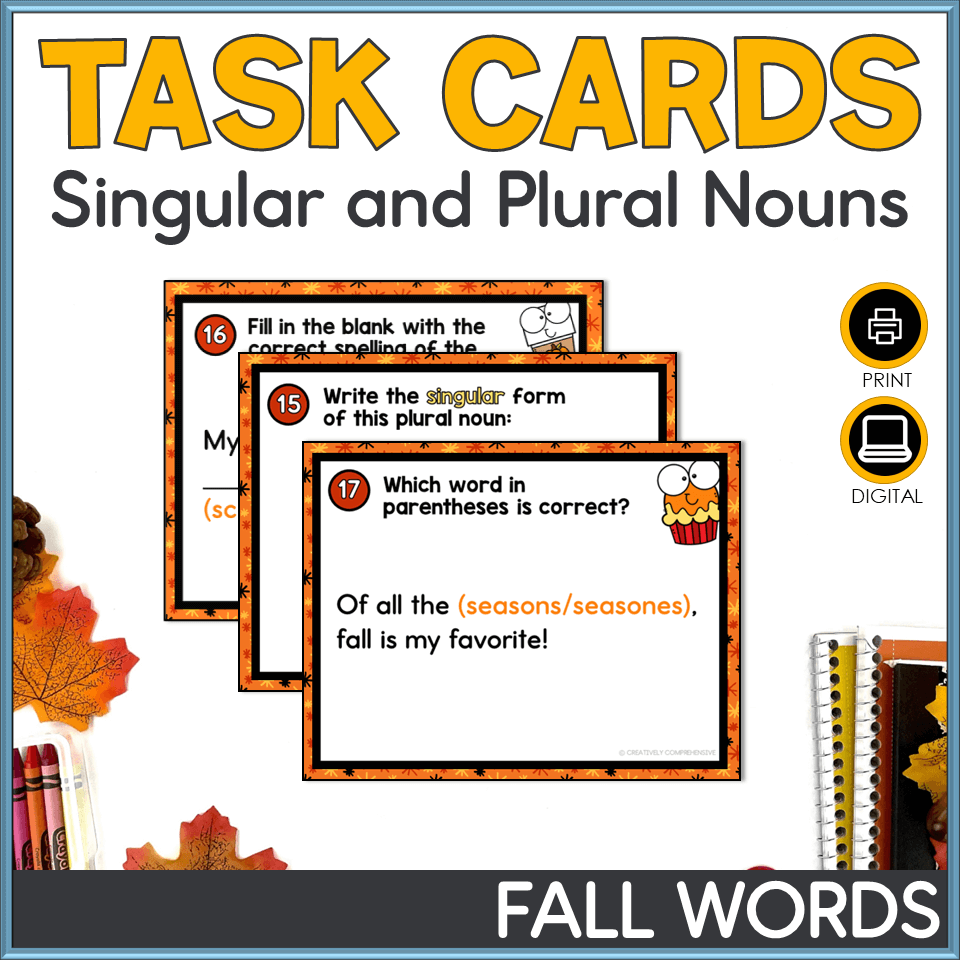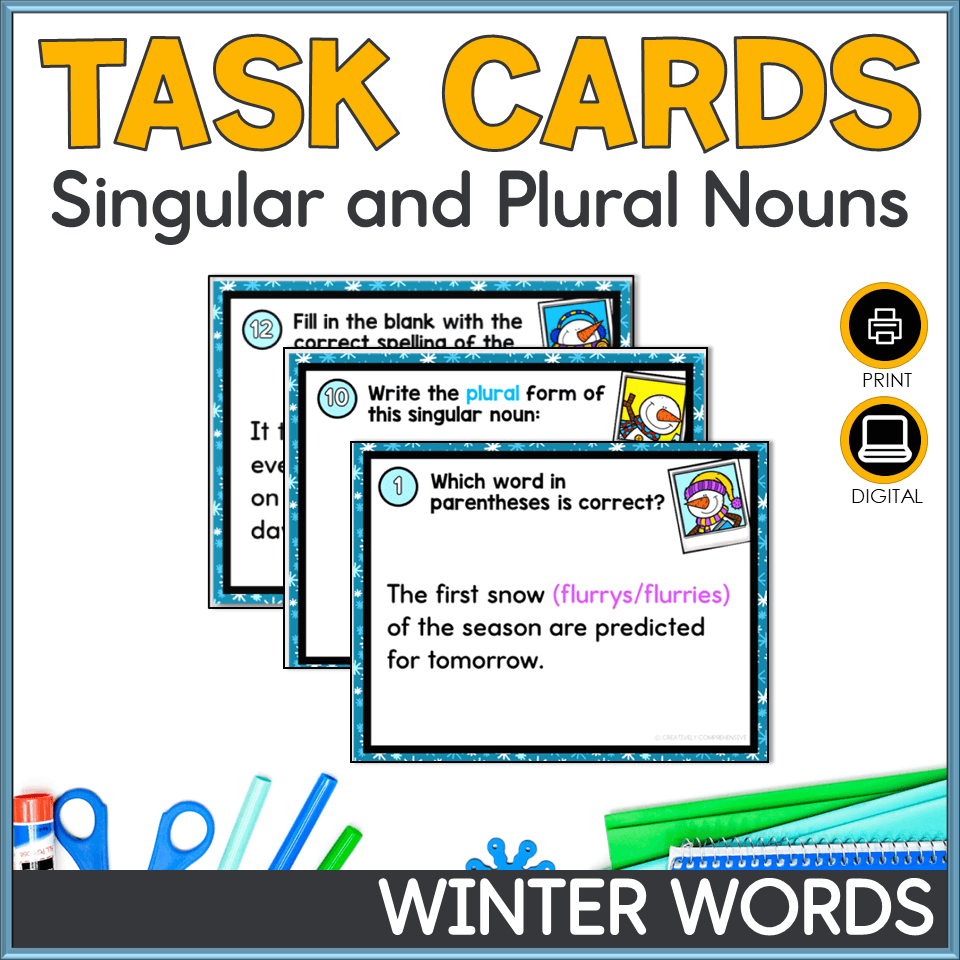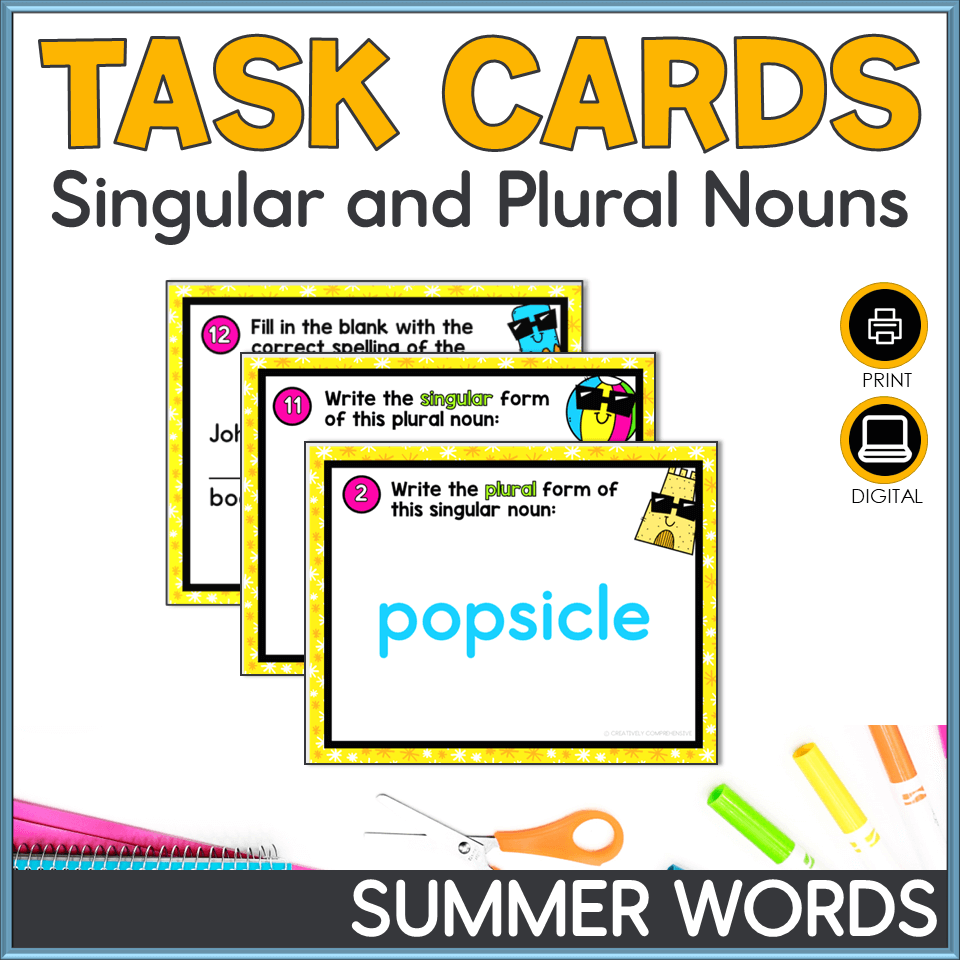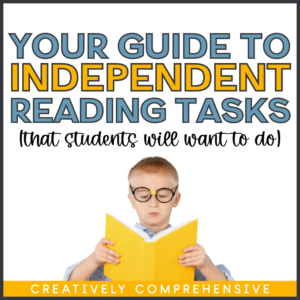Add Seasonal Fun to Make Singular and Plural Nouns Practice Engaging
Sometimes, repetitive practice is necessary.
Singular and plural nouns can be tricky to master. Between the different rules and the subject-verb agreement, your students will probably need a few passes before they are confident in their noun skills. However, there are only so many grammar drills you can do before students tune out! A solution I find helpful is to integrate seasonal content into repetitive practice.
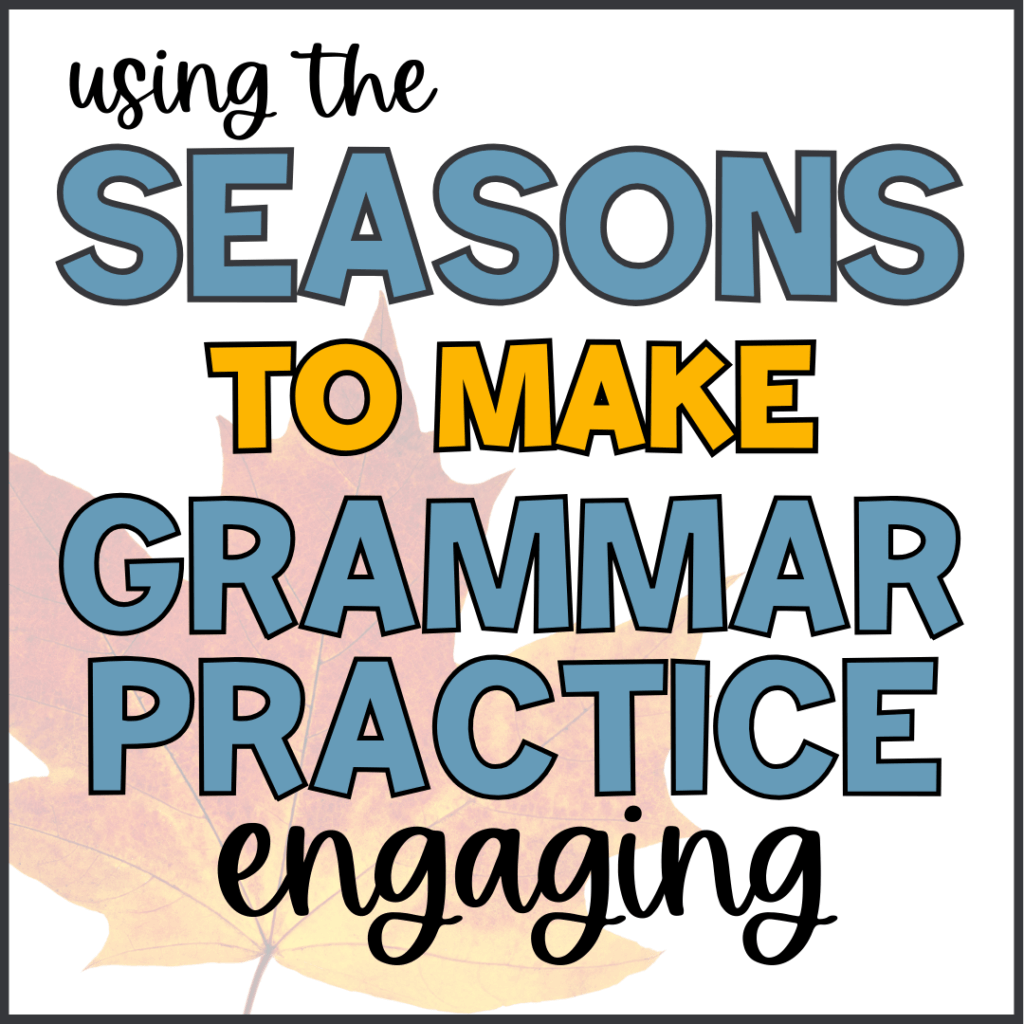
Ready to get started? Grab the Singular and Plural Nouns Seasonal Words Bundle in my TPT store!
Each season brings a certain level of excitement for students. Whether it’s candy corn, snowflakes, blooming flowers, or dreams of the beach- there’s a ton of season-specific vocabulary you can use to keep students engaged when revisiting a skill.
This works especially well with grammar content, in particular singular and plural nouns!
What Are Singular and Plural Nouns?
Before we begin, I always like to provide a quick overview of the topic we’re covering. Nouns are words that represent people, places, things, or ideas. They can be either singular or plural, depending on whether they refer to one or more than one of the noun’s subject.
Singular nouns refer to a single person, place, thing, or idea. Examples of singular nouns include “dog,” “cat,” “book,” and “idea.” Plural nouns, on the other hand, refer to more than one person, place, thing, or idea. Examples of plural nouns include “dogs,” “cats,” “books,” and “ideas.”
Understanding the distinction between singular and plural nouns is crucial for proper sentence construction and effective communication. What seems like a simple grammar skill could be the deciding factor on a job or college application, or any number of opportunities students may have in the future. This is why it’s so important for students to have repeated practice applying the different rules for changing singular nouns to plurals!
What Makes This Topic Challenging
We can’t just add -s to everything! Learning the rules for singular and plural nouns and applying them correctly can be a tricky skill for many students. Some common challenges they face include:
1. Irregular plurals: English has many irregular nouns that do not follow the usual pattern of adding “-s” or “-es” to form the plural. For example, “child” becomes “children,” and “mouse” becomes “mice.” These plurals have to be seen and used repeatedly in order for students to retain irregular spellings.
2. Confusion with countable and uncountable nouns: Countable nouns can be singular or plural, while uncountable nouns are always singular. For example, “book” is countable and can be either singular or plural (“books”), while “water” is uncountable and always singular. This type of abstract thinking is bound to trip some students up!
3. Lack of exposure to real-life examples: Students may struggle to understand the concept of singular and plural nouns without real-life examples. They may find it difficult to apply the rules to everyday objects or situations.
Visuals can help students to remember to apply the rules for plural nouns! You can find this free set of posters in my TPT store.
Practice, Practice, Practice Singular and Plural Nouns
The solution to these challenges? Practice! Task cards give students the opportunity to practice and review skills with a low-risk but highly engaging activity.
Lately, I’m really liking Boom Cards as an alternative to traditional task cards. The interactive element makes them seem like a game to kids, and they’re self-checking! My favorite part is that the cards automatically randomize each time the deck is played. No more memorizing answers!
(You can click here to learn more about Boom Cards. New users will earn a 10% discount on individual accounts with this link. FYI, I may earn a referral prize if you use this link. You do not need a Boom Learning account to use Boom Cards!)
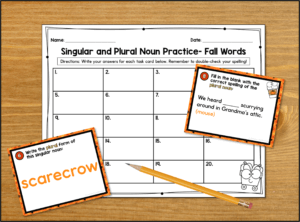
Apply Skills in Different Ways
It’s important that students do more than just identify plural nouns. They need to apply the skill by performing tasks that make them think.
Here are a few applications you can use:
- Identify the correctly spelled plural
- Write the singular version of a plural noun
- Write the plural version of a singular noun
- Fill in the blank with the correct plural noun
Of course, the goal is for students to use the correct plural nouns when writing their own original work. These are just the steps to take along the way!
Singular and Plural Noun Practice All Year Long

Making your own task cards is time consuming! I’ve got you covered with 4 sets of Singular and Plural Nouns seasonal words. Each resource includes print, Boom, and Google Slides versions of the task cards, as well as a recording sheet. Just print or assign, and your students are good to go with meaningful plural noun practice all year long!
You can also see each individual resource by clicking on the images below:

